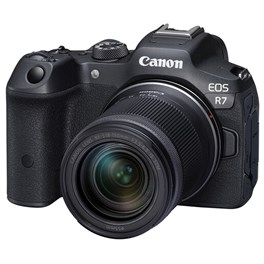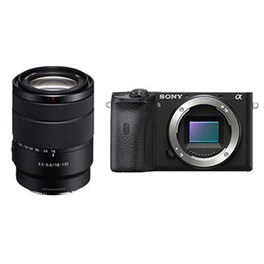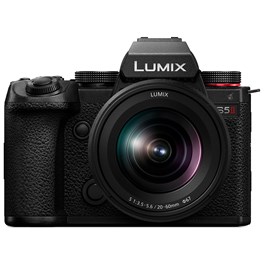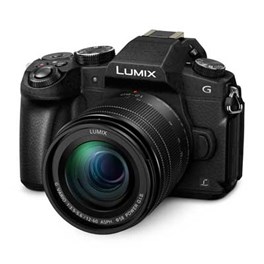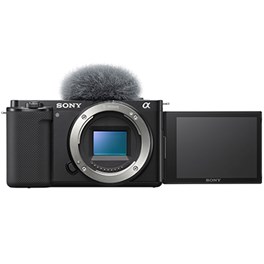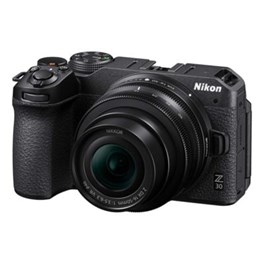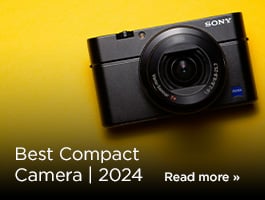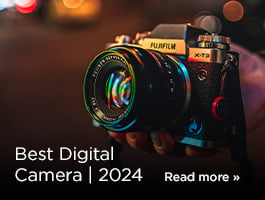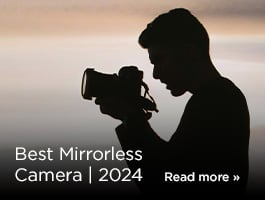
There’s no sense heading off on an adventure without a good camera by your side, and as such we’re recommending the best cameras you can buy for travel filmmaking. Whether you have an eye on a career in filmmaking or video content, or just want something to document your trips and breaks for personal enjoyment, these are the cameras that’ll get it done.
Dedicated cameras for filmmaking have two big advantages over smartphones – bigger sensors, and the ability to change lenses. As such, every camera we’ve included on this list is an interchangeable-lens model with a decent-sized sensor, meaning you have as much shooting flexibility as possible. You can check out our guide to the best lenses for travel filmmaking [link] for the perfect glass to pair with them – here, we’re all about the cameras.
So what else does a camera need to have to qualify as a solid choice for travel filmmaking? This is something we could talk about all day, but space is limited (well, it isn’t really, but you don’t actually want to be here all day, do you?) so we’ve distilled it into a few essential categories.
Video resolution / frame rate - Now, this isn’t to say that you need the ultimate in high-resolution 8K 60p monster cameras or your travel films will be worthless – that is of course not the case. You just need to make sure the camera you pick can shoot in high enough quality for your purposes.
For our money, a good travel filmmaking camera should offer at least 4K resolution, and a minimum frame rate of 30p (30 frames per second). While you may not need to shoot in 4K all the time, having it at your disposal opens up creative options like the ability to losslessly crop into footage.
If your shooting is strictly amateur, for enjoyment purposes only, then Full HD will be fine. However, if you have any intentions at all of filmmaking in a professional capacity, then 4K should at least be an option for you. It’s a similar story with frame rates – 30p is the minimum you’ll want to work with, but 60p is good for giving your footage a professional sheen.
Lightweight, weatherproof build - We’re assuming you’re not going to spend all your time shooting in dusty museums and hotel bars. Travel is an adventurous, outdoor pursuit full of unpredictability, and as such, you don’t want a camera you’re going to be rushing to put away when the weather gets nasty. Similarly, while a good filmmaking camera won’t be feather-light, you should at least be able to carry it around for a day without putting your back out.
Fast autofocus and an articulating LCD screen and lots of lens options and long battery life (with a USB charging option) and a mic port and… - Okay, fine, yes, there’s a lot. You can scroll to the bottom of this page for answers to a few commonly asked questions about travel video, and we’ll cover more of these features as we go – because it’s past time we got to our full list of the best cameras for travel filmmaking.
Best Mirrorless Camera for Travel Filmmaking
Silent and fast, with super-speedy autofocus systems, mirrorless cameras make for pitch-perfect travel filmmaking options. Many full-time video shooters prefer mirrorless cameras over dedicated camcorders for a variety of reasons. One big one is a lovely big electronic viewfinder, which many video cameras lack.
In-body image stabilisation is a significant factor too – this keeps the camera steady by compensating for hand-held movements, making it possible to get smooth moving shots without needing to attach a gimbal. A big part of travel filmmaking is figuring out ways you can carry as little as possible, so this can be a huge help.
All contemporary mirrorless systems have extensive lens catalogues, with plenty of options that are optimised for video. Our aforementioned travel filmmaking lens guide includes options for every mirrorless system featured in this section, so once you’ve got your camera, you can get fully kitted out for a travel shoot.
Canon EOS R7 Digital Camera with 18-150mm Lens
The EOS R7 camera continues Canon’s legacy of formidable next-generation mirrorless tech, packing precision autofocus, state-of-the-art image stabilisation and incredible speed. This RF-mount camera bundle with an APS-C sized sensor provides the ideal balance between resolution, speed and low-light performance for a truly hybrid result that’s capable of competing with full-frame models.
£1,799.00 View
Pros:
- Broad ISO range for low light
- Great all-around performance
- Mic and headphone jacks
Cons:
- RF-S lens range still in early days
A good travel filmmaking camera should do a bit of everything at a reasonable price. So, while Canon’s EOS R5 may have made headlines for its 8K resolution, and the EOS R6 Mark II may be one of the best all-rounder cameras ever made, we reckon the EOS R7 is going to fit the bill for travel filmmaking. It’s an APS-C camera, with a smaller sensor than its full-frame big brothers, but thanks to its impressive ISO performance it punches above its weight in low light. It’s got subject-detect autofocus that can identify humans, animals and vehicles and track them in the frame, and pleasingly, it isn’t too heavy.
There still aren’t too many RF-S lenses available for smaller-sensor EOS R cameras. The full-frame RF lenses will still work, but will be heavier and may provide an unbalanced setup. You might want to consider adapting some EF-S lenses with the EF-EOS R adapter – you’ll get full functionality of autofocus and stabilisation.
Sony A6600 Digital Camera with 18-135mm F3.5-5.6 OSS Lens
The Sony A6600 with 18-135mm lens has been designed to provide beautiful detail and high resolution images combined with super-fast and powerful processing, all in a compact shell. With these two paired together, it's easy. This system caters to the needs to enthusiasts and professional alike, and in both photography and videography because of the pure quality of its capture. This kit comes with the already acclaimed Sony E 18-135mm f3.5-5.6 OSS Lens that allows this camera to be used for almost any type of photography; even more so with Wex Photo Video's whole range of Sony E mount lenses.
£1,399.00 View
Pros:
- Super-fast autofocus
- Headphone and mic sockets
- Very good battery life
Cons:
- Menus can be unintuitive
- Only one SD UHS-I card slot
The best APS-C camera Sony has ever produced? Quite possibly yes – this crop-sensor wonder takes everything that was great about the A6000 and turns it up a notch. These cameras have always had great autofocus – this one can acquire a subject in as little as 0.02sec, and its tracking of moving subjects is first rate. Also, while other models in this series have been a little slim and not the easiest to hold, the A6000 gets a lovely deep handgrip that vastly improves its ergonomics.
Sony E-mount is one of the best-stocked lens systems around, though if you want a one-size fits all lens for travel filmmaking, we’d say pick up the bundle that includes the A6600 and the 18-135mm F3.5-5.6 OSS lens. It’ll give you plenty of shooting flexibility, with enough sharpness to make the most of the 4K HDR video recording the camera offers.
Panasonic Lumix S5 II Digital Camera with 20-60mm Lens
A step above its predecessor, the Panasonic Lumix S5 II provides incredible performance. A first for Lumix cameras, Hybrid Phase Detection Auto-Focus detects subjects in difficult conditions and offers all-around AF improvements. The 24-megapixel full-frame sensor can record 6K video internally and up to 180fps in Slow & Quick capture. Also included is a Panasonic Lumix 20-60mm f3.5-5.6 lens.
£1,899.00 View
Pros:
- Excellent hybrid autofocus
- A great price for full-frame
- Relatively portable system
Cons:
- No CFExpress slot
- Battery life not the best
Panasonic listened to videographers and photographers alike, and when the time came for a successor to its lightweight full-frame Lumix S5, they only went and added the feature we’d been crying out for. That’s right – no more sluggish contrast-detect autofocus, the Lumix S5 II uses a beautifully snappy hybrid system with on-chip phase detection Even in low light or otherwise challenging conditions, it functions brilliantly, and means the Lumix S5 II excels at run-and-gun travel filmmaking.
It’s a relatively portable camera, especially for full-frame, but is no slouch when it comes to features. You can shoot at high frame rates like 120fps and 180fps for super slow motion, or capture internal 6K 30p footage for dazzling, dynamic quality. The construction of the camera itself is dustproof and splashproof, so you don’t need to worry about the weather turning. Also, while battery life on the camera is not the best, it can be charged via USB-C, so pick up a small power bank and you’ll be equipped for a day’s shooting.
Best DSLR Camera for Travel Filmmaking
Contemporary DSLRs are a fantastic option for filmmaking. While they are physically larger than most mirrorless cameras (though the difference isn’t as significant as you might think), their ergonomic, grippable form factor and optical viewfinders make them fantastic for immersing yourself in the moment.
After all, in the mid-aughts, Canon revolutionised filmmaking with the EOS 5D Mark II, ushering in the era of DSLRs finding their way into professional film and television productions. So while mirrorless systems may grab the limelight these days, if you want to make films on a DSLR, you’re in esteemed company.
With lens catalogues that stretch back for decades, DSLR systems are well-stocked for filmmakers and photographers alike. We’ve picked a couple of options from the big two DSLR manufacturers – no prizes for guessing who – and these lightweight, nimble cameras will both provide you with a solid foundation for a top-notch travel filmmaking setup.
Pros:
- Glorious, uncropped 4K
- Useful fully articulating LCD screen
- Great Live View autofocus
Cons:
- No USB charging
- No 24p option in 4K or Full HD
One of the most enduringly popular APS-C DSLRs ever made, the Canon EOS 90D is a solid, rugged camera that is loaded with advantages for travel filmmaking. If you’ve spent much time on YouTube, you’ve probably watched a video that was shot on a 90D. Canon fixed a lot of the previous problems with its video offering when it came time to release this model, one of the biggest being the nasty 4K crop its cameras would impose. That’s right – the EOS 90D shoots beautiful, crisp uncropped 4K using the full width of its sensor, and is all the better for it.
Despite its rugged, DSLR handling, the EOS 90D feels in a lot of ways as though it’s meant to be used like a mirrorless camera. While it of course offers an optical viewfinder, its vari-angle LCD screen is a superb option for composition, and with Live View focusing as good as it is here, you’ll likely find yourself favouring the screen to frame your shots.
With loads of high-quality, lightweight lenses available for Canon EF-mount, the EOS 90D can easily form the linchpin of a highly effective travel filmmaking setup.
Pros:
- Solid 4K quality
- Copes well at high ISOs
- Lovely colour rendition
Cons:
- Getting harder to find
- Single card slot
The Nikon D7500, an APS-C DSLR, is agile and speedy, with low-light performance that’s particularly excellent, punching above its weight for a camera in this price bracket – it offers a maximum extended ISO setting of 1,640,000. The 180K-pixel RGB sensor makes the D7500 highly accurate when it comes to calculating exposure, and having cinematic 4K UHD footage at your disposal makes this DSLR a powerful filmmaking tool.
While we don't stock new stock of the D7500 any longer we still think it's a great DSLR - well worth buying if you find one that suits you in our second-hand used-camera range. You can find all the used D7500's we stock here! Things do move fast over there though, so if you see one going for a good price, don’t mull it over for too long!
Best Medium Format Camera for Travel Filmmaking
There’s currently one name in medium format filmmaking, and it’s Fujifilm. Having radically reshaped perceptions of what medium format cameras can look like with its portable and relatively affordable GFX series, Fujifilm also went one step further and made its large-sensor cameras a credible option for video. (Hasselblad doesn’t currently offer video functionality on its medium format mirrorless cameras).
Fujifilm has made the most of the video potential of its cameras by ensuring that its GFX 100 cameras use the full 43.8mm width of their large sensors to capture video. This means that there’s no nasty crop to compromise the field of view or the quality obtained from the lenses (though a little is chopped off the top and bottom, as the sensors are 4:3 format). The video is downsampled from an initial 60-million-pixel capture to DCI 4K 4096 x 2160 or UHD 4K 3840 x 2160, meeting the standards for professional production.
Pros:
- 10-bit 4K Raw and F-Log profile
- Video supports Film Simulation modes
- Effective in-body stabilisation
Cons:
- Lenses tend to be heavy
- Possible rolling shutter with fast-moving subjects
Fujifilm has done a lot of work to woo video shooters in recent years, which goes a long way toward explaining why the GFX 100S is as kitted out for movies as it is. The 100MP camera supports 10-bit 4K Raw video capture, and also offers support for Fujifilm’s F-Log image profile. A Log profile is a flat colour profile designed to give the widest dynamic range possible, retaining as much tonal information as possible. On their own they tend to look rather flat and dull – the whole point is that they’re giving you as much information as possible when it comes to grading and editing the footage. And with a sensor like the one on the GFX 100S, there’s a lot of information to be recorded.
This is never going to have the run-and-gun agility of a smaller system camera, but Fujifilm has done a credible job of making it a viable option for travel filmmakers. Do your research on the lenses before buying, though, as GF-mount optics can get quite heavy.
Fujifilm GFX 100 Medium Format Camera Body
Characterised by such extreme high-resolution image capturing, multi-functional feature setup, and 102MP 43.8mm x 32.9mm BSI CMOS sensor, the Fujifilm GFX 100 is tailored to expansive multi-media workflows. It further consists of in-body 5-axis image stabilisation, 4K30p video recording, and an incredible native ISO range of 100-12,800 - Solely compatible with GF series (G-mount) lenses.
£9,999.00 View
Pros:
- High-quality 4K 30p video
- Effective 5-axis stabilisation
- Body is weather-resistant magnesium alloy
Cons:
- Bulkier and pricier than all other options
- Inevitably slower AF speed
It may not be the kind of thing that immediately jumps to mind when we talk about travel filmmaking, but the Fujifilm GFX 100 is a capable video performer in its own right. With the ability to shoot 10-bit 4K 30p 4:2:0 video (which can be upgraded to 4:2:2 when it’s connected to a recorder), the Fujifilm GFX 100 can deliver seriously professional results. The body, while heavier than most at 1.4kg, is still lighter than many medium format options, and the 5-axis image stabilisation is highly effective at combating camera-shake.
This is obviously an option that’s only going to appeal to a handful of people – but if it’s within your budget, the medium format look is just as distinctive on video as it is in still photography. Pair the GFX 100 with a suitable GF lens and we guarantee you’ll be blown away by the results it’s capable of achieving.
Best Budget Camera for Travel Filmmaking
In case those medium format prices had your eyes watering, we’re ending our guide with a section dedicated to the best budget options for travel filmmakers. You absolutely do not have to spend a four-figure sum on a travel filmmaking setup; there are plenty of fantastic options at low price points that will give you everything you need to produce terrific content.
We’ve included a mix of newer and older cameras here, as there are often serious savings to be had in the video world by looking at kit that’s a few years old. The 4K boom has been in full swing for quite a few years, so you don’t have to worry about compromising on resolution, and you can still get a lot of great features or your money, with budget models including in-body stabilisation, fast phase-detection autofocus, and more.
Panasonic Lumix DMC-G80 Kit with 12-60mm lens
Free 25mm lens worth £148
The rugged Panasonic Lumix DMC-G80 with 12-60mm lens incorporates a host of advanced technologies and practical functions, including an updated dual Image Stabilisation system. Furthermore, it has 4K video recording capability, with 8-megapixel stills extraction. The 16.0-megapixel DMC-G80 and 12-60mm f3.5-5.6 lens work together to deliver distortion-free, high-quality videos and stills.
£599.00 View
Pros:
- Cinelike Gamma D profile
- Great price for camera and lens
- Zebra highlight warnings
Cons:
- No headphone jack
- Mic jack interferes with articulating screen
Let it never be said again that 4K video has to be expensive. The Panasonic Lumix G80 is a mirrorless camera that shoots gorgeous 4K video, and you can get it in a kit complete with a 12-60mm lens for as little as £549. Happily for travel filmmaking purposes, this camera has clearly been oriented around its video capabilities, with useful features like a Cinelike Gamma D profile for a flat colour output. This is like the Log profiles you get in pro-level cameras – while it’s not quite the same, it does an impressive job. Another handy feature is zebra patterning, which puts an overlay on the screen to alert you when parts of the frame are over-exposed – useful for making sure you don’t blow out your shots in bright sunlight.
The Lumix G80 uses a Micro Four Thirds sensor. This is a smaller format than others on our list, but still represents a decent step up from a smartphone sensor.
Sony ZV-E10 Digital Camera Body
Sony’s ZV-E10 is a dedicated vlogging camera, designed to produce professional-level video content that will engage with your audience, be it on Youtube, Twitch or Facebook. The camera is equipped with a powerful 24.2 Megapixel APS-C Exmor CMOS sensor that offers 4K (up to 30p) and Full HD slow motion (up to 120P) video capture, and with the option to pair with 60+ compatible premium Sony lenses, you’ll be able to capture some truly stunning content. The camera is equipped with a range of intuitive and useful features that lend themselves to vlogging such as, a vari-angle touch screen, a high-quality integrated directional microphone and the use of Sony’s highly regarded Real-Time Eye AF that will ensure focus is maintained whilst you’re vlogging.
£549.00 View
Pros:
- Comes with furry wind shield
- Broad microphone compatibility
- Superb real-time Eye autofocus
Cons:
- No viewfinder
- No in-body stabilisation
The Sony ZV cameras are designed for vlogging first and foremost, and as such, the Sony ZV-E10 ticks a lot of boxes as far as travel filmmaking is concerned. Its hybrid autofocus system, with 425 phase-detection points and 425 contrast-detection points, locks onto subjects with unerring accuracy. Having Sony’s Eye AF on board is also great for filmmaking, as you can rely on the eyes of your human subjects to be in focus.
The audio setup on the ZV-E10 is first rate. It comes with a built-in three-capsule microphone and an optional windshield attachment for reducing external noise. However, you also have the option to plug in an external mic via the 3.5mm jack input; or, if you prefer, rigging up Sony’s XLR adapter to the hotshoe and potentially having two XLR mics at your disposal! This makes the camera immensely versatile for filmmaking – indeed, much more so than many competing cameras that cost more than twice as much.
Nikon Z30 Digital Camera with 16-50mm Lens
Take the next step in your content career with the Nikon Z30 Digital Camera. Designed to help you improve your content and give followers a better experience, the Z30 allows you to create with more light, power and versatility whilst providing an abundance of helpful automatic and user-friendly features. This is the perfect upgrade for those that need to flex between home, the studio and the road.
£839.00 View
Pros:
- Portable and easy to use
- Consistently fast autofocus
- Excellent built-in mic (and 3.5mm port)
Cons:
- No viewfinder
- No headphone jack
One of the lightest and most affordable offerings in the Nikon Z mirrorless range, the Nikon Z30 is a budget-friendly vlogging machine. It may be small, but Nikon’s designers have made sure to give it a satisfyingly deep handgrip that makes the Z30 comfortable to hold for long periods, while the light weight means you’ll have no problem wielding it one-handed.
It strips away the viewfinder found on other APS-C Z-mount cameras – this may bother you, it may not. Composition on the articulating LCD screen is an intuitive experience, especially for video, and we also have to give a shout-out to the excellent audio technology. While you can use the 3.5mm mic jack to plug in an external mic (and you arguably should), the sophisticated built-in stereo microphone with wind reduction technology means that if this isn’t an option, you’ll get by without it. Video AF is also excellent – fast and capable, perfect for recording on the move.

FAQs
What should I look for when choosing a camera for travel filmmaking?
When choosing a camera for travel filmmaking, you should consider factors such as size and weight, image quality, durability, battery life, and versatility.
Is a DSLR or mirrorless camera better for travel filmmaking?
Both DSLR and mirrorless cameras can be great for travel filmmaking, but mirrorless cameras tend to be smaller and lighter, making them easier to carry around.
What is the best lens for travel filmmaking?
The best lens for travel filmmaking depends on your specific needs, but a versatile zoom lens with a wide focal range, such as a 24-70mm or 18-135mm, can be a good choice.
What is the ideal resolution for travel filmmaking?
A resolution of 1080p or higher is generally recommended for travel filmmaking, as this provides good quality footage for most purposes.
Should I choose a camera with in-body image stabilisation (IBIS)?
In-body image stabilisation can be very helpful for travel filmmaking, as it can help to reduce camera shake and produce smoother footage, so it is worth considering.
How important is low-light performance for travel filmmaking?
Low-light performance can be important for travel filmmaking, especially if you plan to shoot in challenging lighting conditions, such as at night or indoors.
What kind of audio capabilities should I look for in a travel filmmaking camera?
Look for a camera with a built-in microphone and the ability to attach an external microphone, as well as features like manual audio control and a headphone jack for monitoring audio levels.
Is it necessary to have a camera with weather sealing for travel filmmaking?
Weather sealing can be helpful for travel filmmaking, as it can help to protect your camera from dust, moisture, and other environmental factors. However, it may not be necessary depending on your specific travel plans and shooting conditions.
Browse our full range of cameras
How do we decide?
Our in-house photography experts, store staff and partners all work collaboratively to pour over our guides and tips articles. We also consider emerging trends and customer feedback to make sure our guides are always up-to-date and reflective of what people are truly looking for. By curating only the best products, our guides provide trustworthy recommendations, making it easier for customers to make informed choices with confidence.
If you would like more advice on any purchase our contact centre staff are here to help. Alternatively, you can reach us via email or social media. And don't forget. If you were to purchase anything based on our recommendations you'll be covered by our full returns policy
